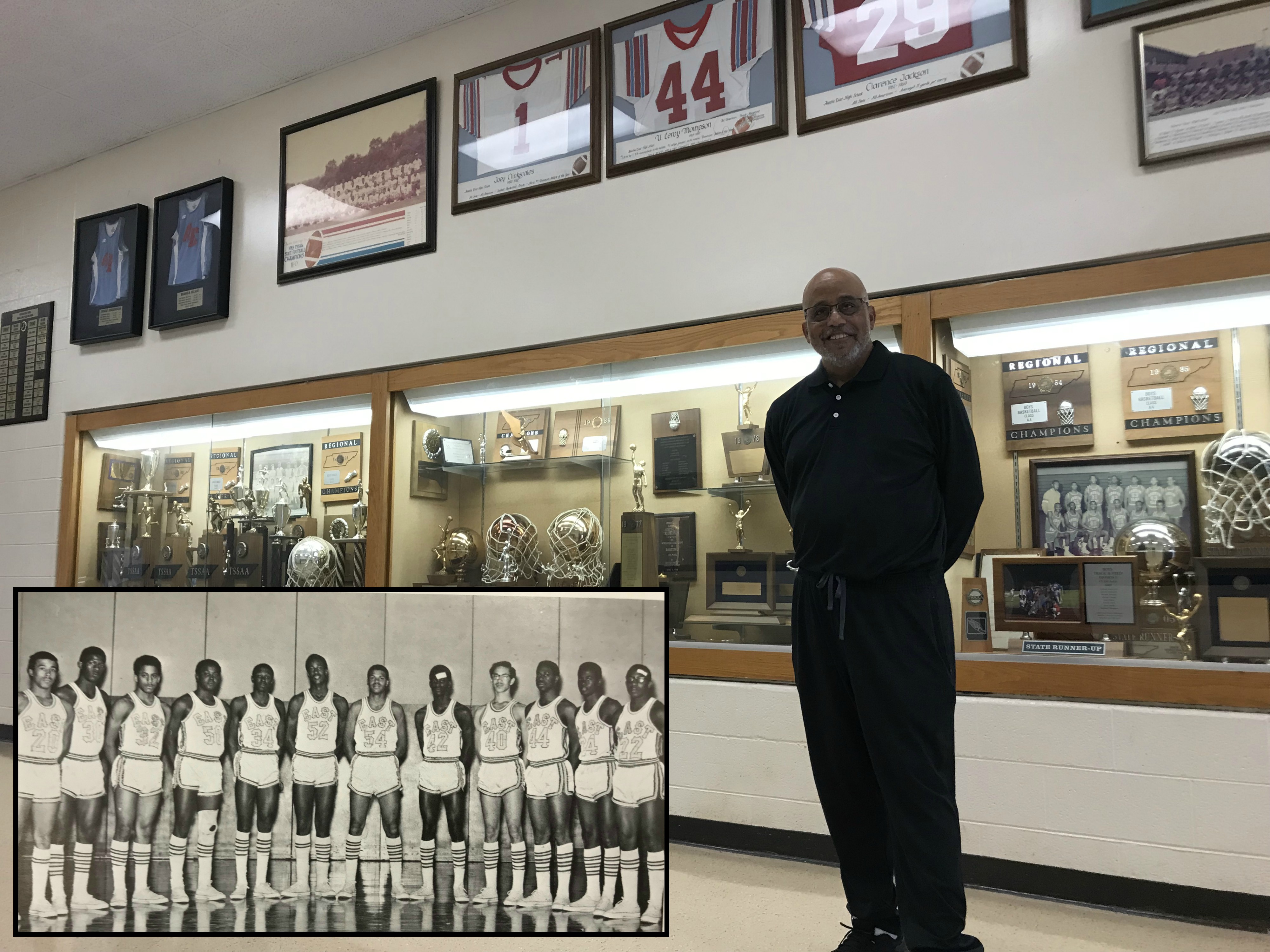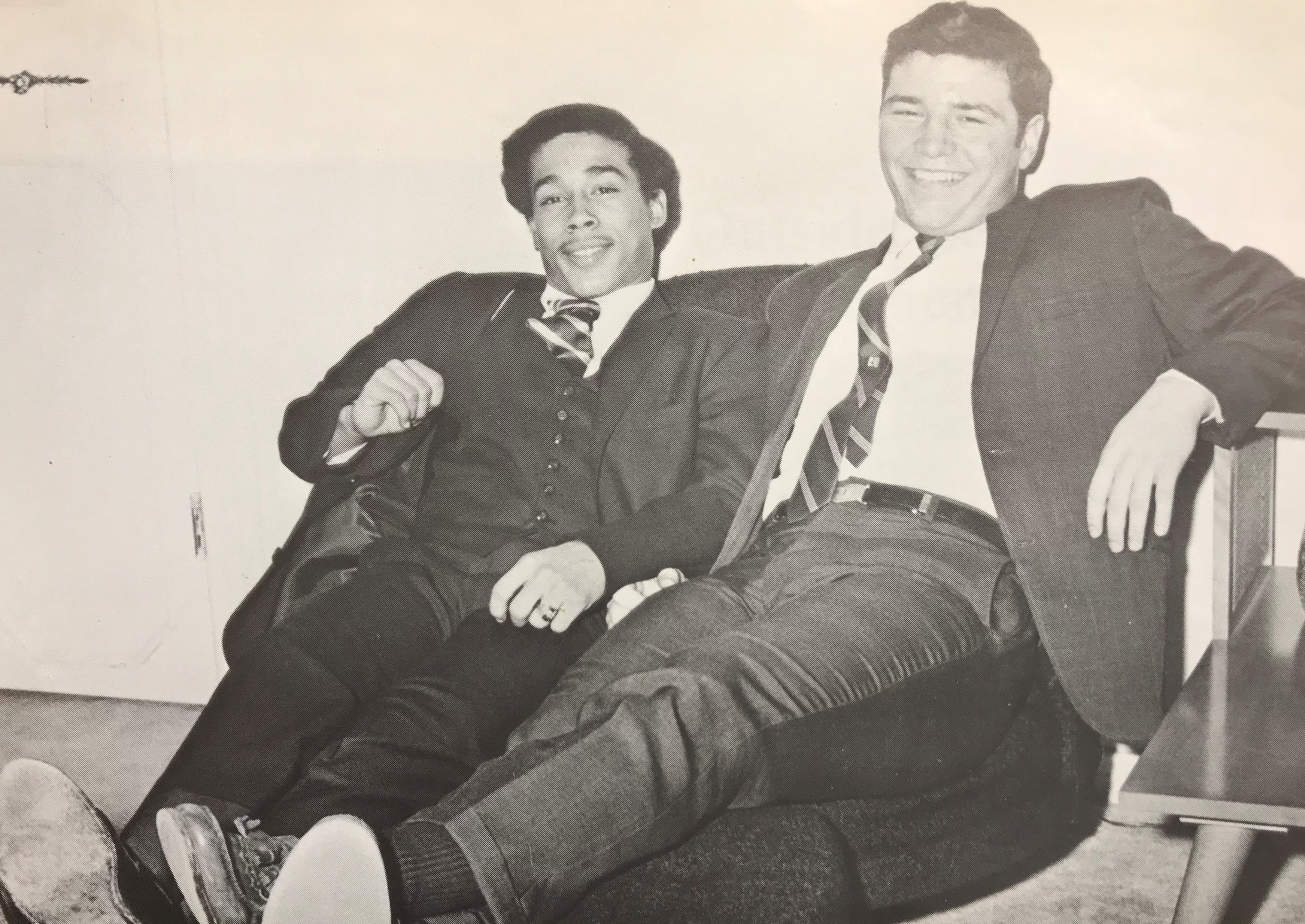-
Austin-East Celebrates
50th Anniversary Of MergerPosted by Josh Flory on 9/27/2018Brenda Green didn’t know what to expect when she walked into Austin-East High School for the start of her junior year.
It was the fall of 1968 and Austin High, a school attended by black students like Green, had just been merged with predominantly white East High, which had accepted its first black students only a few years earlier.
Located in the former East High building, on what is now Martin Luther King Jr. Avenue, the new Austin-East was aimed at promoting desegregation within the district.
It was a tumultuous era in U.S. history. Dr. King, the famous civil rights leader, had been assassinated in April, and more than 16,000 U.S. soldiers would die in Vietnam that year.
Green was disappointed she couldn’t follow in the footsteps of family members who had attended Austin High -- which was located near her home -- and she didn’t know how she would be treated at Austin-East.
But a hopeful sign came as she walked to her first class and recognized some of the adults standing outside their rooms, including English teachers Esther Cowan and Alfredda Delaney. Green said those familiar faces were a relief, and that as she got to know more people Austin-East became a safe haven.
“I learned to love my school,” she added.
This fall, Austin-East is celebrating the 50th Anniversary of the 1968 merger. For alumni like Green, the milestone is a chance to look back on a historic experience that has left them with a lasting love for their alma mater.
 Brian Harvey stands in front of the trophy case at Austin-East High School, his alma mater, on Sep. 17, 2018. Inset is a 1969 yearbook photo, with Harvey third from the left, wearing #32.
Brian Harvey stands in front of the trophy case at Austin-East High School, his alma mater, on Sep. 17, 2018. Inset is a 1969 yearbook photo, with Harvey third from the left, wearing #32.Brian Harvey was the son of a Knoxville College professor, and his older sister was one of the first black students to attend East High School. Harvey started at East in 1966, and remembered being happy when it merged with Austin, because he saw a lot of old friends from church or his neighborhood.
“It was kind of like a reunion in a lot of ways,” he said.
The sting of racial discrimination was familiar to Harvey, but he said the support of coaches and teachers at Austin-East was hugely influential for him. He cited Jamesena Washington, a teacher who reminded her students that “black is beautiful as well as white is beautiful.”
“She was one of the ones that taught us no matter what, there’s another kind of beauty than the beauty you see in Look Magazine or Life Magazine,” Harvey said.
Washington, who taught French and history, was an educator for more than 30 years, starting at Austin High School before moving to East in 1966, then to South High School a couple of years after the merger, and eventually back to Austin-East. She retired in 1994.
When the merger happened, Washington went out of her way to be available for students, making sure to stand at her door between classes so they could talk with her.
She said students would approach her for help with certain teachers, or to seek advice about situations outside of school. She even allowed them to call her at home. “Several of them wanted to come home with me, but my husband said no,” she added with a chuckle.
But they did host a dinner for the French club at their home, with each student asked to bring a French-inspired food. Washington prepared the meat, a dish called beef bourguignon that was made by braising beef in burgundy.
After they had eaten, she shocked the students by identifying the cut of meat: beef tongue.
“The point of all of this was when you go into a different community, you are subjected to a different culture, sometimes you do what they are doing without making a fuss,” Washington said. “So if they serve you beef tongue, you eat beef tongue. And act as though you enjoy it, which they did.”
 Jamesena Washington is pictured on Sep. 18, 2018. Inset is a 1969 yearbook photo, showing Washington as a teacher.
Jamesena Washington is pictured on Sep. 18, 2018. Inset is a 1969 yearbook photo, showing Washington as a teacher.After the merger, many white students left for other schools rather than staying at Austin-East. One who stayed was Carl Torbush, a star athlete who went on to a football coaching career that included positions as head coach at the University of North Carolina and East Tennessee State University.
Torbush said he felt a strong sense of loyalty to his friends and to the community, and also saw an opportunity to be part of a strong athletic program. He remains friends with many of those former teammates, and while coaching at ETSU brought some of them -- including Harvey -- onto the field after a game to meet his players.
“I take great pride in everything they do,” he said about Austin-East. “That’s whether it’s athletics or academics. I take great pride in saying I’m from there.”
In the years following the merger, much has changed at Austin-East, including a major expansion of the physical campus in the late 1990’s and its designation in 1997 as Knox County’s only performing and fine arts magnet high school.
The school offers a variety of arts opportunities, including a dance company and the well-known West African Dance and Djembe Drum Orchestra. Austin-East is open to students throughout Knox County who are interested in an arts-oriented course of study.
The school's sports teams have also seen notable success over the years. In the 1986-87 academic year, the school won four state championships -- in football, boys’ basketball, and boys’ and girls’ track-and-field -- which is still a record in Tennessee. Famous alumni also include Oakland Raiders general manager Reggie McKenzie, who played at the University of Tennessee.
 Carl Torbush, right, is pictured in a photo from the 1969 Austin-East yearbook.
Carl Torbush, right, is pictured in a photo from the 1969 Austin-East yearbook.Many Austin-East alumni will be back on campus this week, as the high school celebrates Homecoming on September 28. Scheduled events include a Friday parade and alumni tailgate before the football game, against Scott High School, of Huntsville, Tenn., and a halftime performance by the Fort Valley State University marching band.
For many of those alumni, the festivities and fellowship will be a chance to look back on an event that drew students closer together.
Mary Carter-Henderson was part of the first class to graduate from Austin-East, in 1969, and said she thinks her class may have been the most closely bonded.
“I think because we had so much against us in a way,” she said, “and people probably thought, ‘Well, it’s not going to work, they’re going to fail, they’re going to fight each other, whatever.’ And we didn’t, we just embraced each other. And knew that we had to make it work.”
Select a School...
Select a School
- A.L. Lotts Elementary (es)
- Adrian Burnett Elementary School (es)
- Amherst Elementary School (es)
- Austin-East Magnet High School (hs)
- Ball Camp Elementary School (es)
- Bearden Elementary School (es)
- Bearden High School (hs)
- Bearden Middle School (ms)
- Beaumont Magnet Academy (es)
- Belle Morris Elementary School (es)
- Blue Grass Elementary School (es)
- Bonny Kate Elementary School (es)
- Brickey-McCloud Elementary School (es)
- Career Magnet Academy (hs)
- Carter Elementary School (es)
- Carter High School (hs)
- Carter Middle School (ms)
- Cedar Bluff Elementary School (es)
- Cedar Bluff Middle School (ms)
- Cedar Bluff Preschool (p)
- Central High School (hs)
- Chilhowee Intermediate School (es)
- Christenberry Elementary School (es)
- Copper Ridge Elementary School (es)
- Corryton Elementary School (es)
- Dogwood Elementary School (es)
- Dr. Paul L. Kelley Volunteer Academy (hs)
- East Knox County Elementary School (es)
- Fair Garden Family Center (p)
- Farragut High School (hs)
- Farragut Intermediate School (es)
- Farragut Middle School (ms)
- Farragut Primary School (es)
- Fort Sanders Ed. Development Center (p)
- Fountain City Elementary School (es)
- Fulton High School (hs)
- Gap Creek Elementary School (es)
- Gibbs Elementary School (es)
- Gibbs High School (hs)
- Gibbs Middle School (ms)
- Green Magnet Academy (es)
- Gresham Middle School (ms)
- Halls Elementary School (es)
- Halls High School (hs)
- Halls Middle School (ms)
- Hardin Valley Academy (hs)
- Hardin Valley Elementary School (es)
- Hardin Valley Middle School (ms)
- Holston Middle School (ms)
- Inskip Elementary School (es)
- K.A.E.C.
- Karns Elementary School (es)
- Karns High School (hs)
- Karns Middle School (ms)
- Karns Preschool (p)
- L&N STEM Academy (hs)
- Lonsdale Elementary School (es)
- Maynard Elementary School (es)
- Mill Creek Elementary School (es)
- Mooreland Heights Elementary School (es)
- Mount Olive Elementary School (es)
- New Hopewell Elementary School (es)
- Northshore Elementary School (es)
- Northwest Middle School (ms)
- Norwood Elementary School (es)
- Pleasant Ridge Elementary School (es)
- Pond Gap Elementary School (es)
- Powell Elementary School (es)
- Powell High School (hs)
- Powell Middle School (ms)
- Richard Yoakley School
- Ridgedale School
- Ritta Elementary School (es)
- Rocky Hill Elementary School (es)
- Sarah Moore Greene Magnet Academy (es)
- Sequoyah Elementary School (es)
- Shannondale Elementary School (es)
- South Knoxville Elementary School (es)
- South-Doyle High School (hs)
- South-Doyle Middle School (ms)
- Spring Hill Elementary School (es)
- Sterchi Elementary School (es)
- Sunnyview Primary School (es)
- Vine Middle Magnet School (ms)
- Knox County Virtual School (hs) (es) (ms)
- West Haven Elementary School (es)
- West High School (hs)
- West Hills Elementary School (es)
- West Valley Middle School (ms)
- West View Elementary School (es)
- Whittle Springs Middle School (ms)

